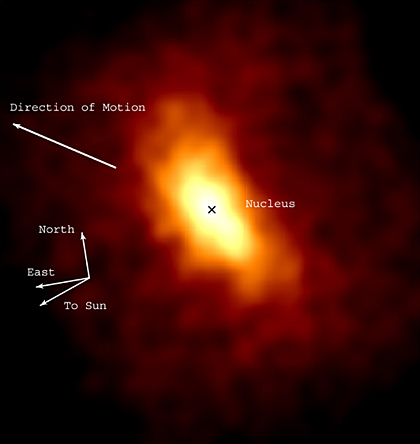The Unexpected: The Solar System
Looking back on the more than twelve years of science from NASA’s Chandra X-ray Observatory and trying to predict what it will find in the future, one thing is certain: we can expect the unexpected.
This blog series will look at both some of the anticipated findings from the past dozen or so years, plus some of the unexpected results so far from the Chandra mission. Today, we look at discoveries involving our Solar System.
Expected and Detected:
X-ray emission was detected from the atmospheres of planets and comets. The X-rays are produced when solar X-rays and high-speed particles flowing away from the Sun hit these atmospheres. The observed X-radiation provides information on the outer atmospheres of these objects that is difficult to obtain with other telescopes.
More information:
http://chandra.harvard.edu/press/00_releases/press_072700.html
http://chandra.harvard.edu/photo/2001/venus/
http://chandra.harvard.edu/photo/2002/mars/
Unexpected: The X-radiation from Jupiter's aurora, the equivalent of Earth's Northern Lights, was discovered to be located very near Jupiter’s poles, suggesting that the auroral X-rays are produced by particles streaming along Jupiter’s magnetic field all the way from Jupiter's moon Io.
More information:
http://chandra.harvard.edu/press/05_releases/press_030205.html
Unexpected: The strongest X-ray emission from Saturn came from its equatorial regions and varied with solar activity, suggesting that Saturn acts like a surprisingly efficient X-ray mirror that reflects X-rays from the Sun.
More information:
http://chandra.harvard.edu/press/04_releases/press_030804.html
Unexpected: The discovery of X-rays from Saturn's rings, from a source that is still unknown. It could be due to beams of energetic electrons produced in lightning storms on Saturn.
More information:
http://chandra.harvard.edu/photo/2005/saturn_rngs/
Category:
- Log in to post comments




